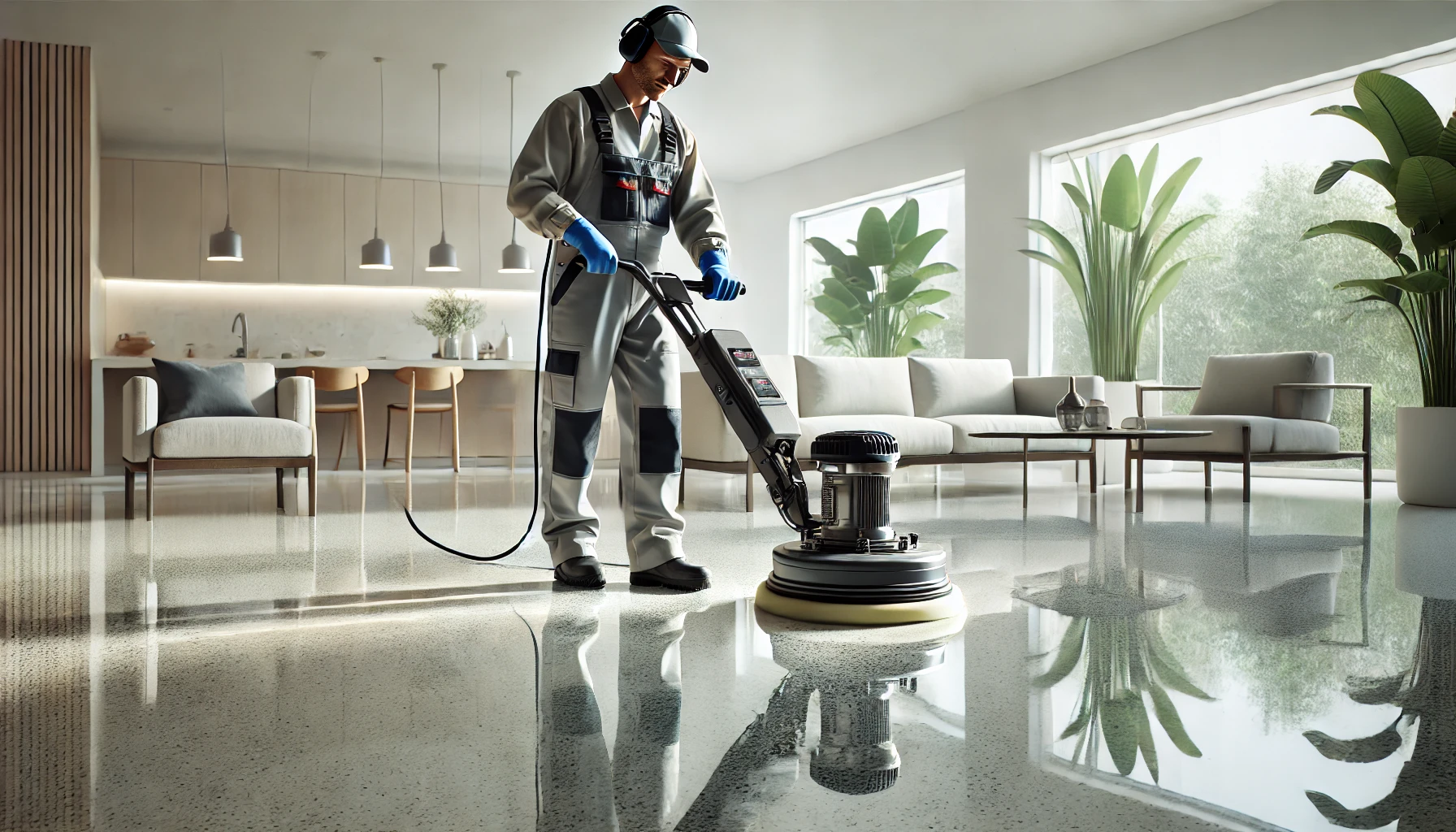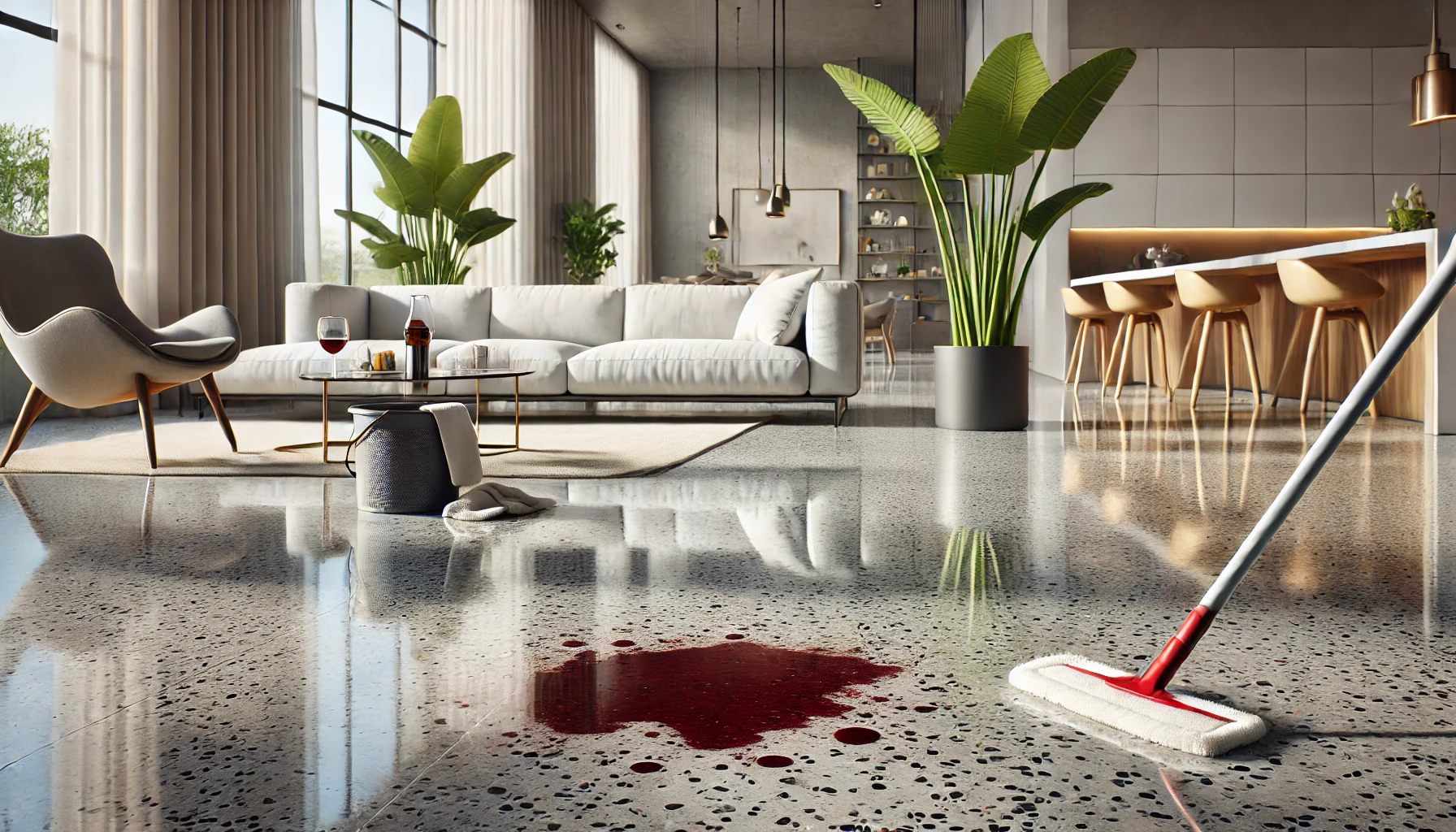Cleaning a terrazzo floor requires proper techniques and the right products to maintain their beauty and durability. Understanding the composition and benefits of terrazzo is essential for effective care. Regular cleaning can enhance the longevity and aesthetic appeal of terrazzo surfaces. Following a routine of dust mopping, deep cleaning, and stain removal will ensure these floors remain in excellent condition.
Regular Terrazzo Floor Cleaning Maintenance
Establishing a regular cleaning routine is vital for preserving the beauty and integrity of terrazzo floors. Consistent maintenance minimizes dirt buildup and potential damage, ensuring long-lasting elegance.
Daily Dust Mopping
Daily dust mopping is an essential first step in maintaining terrazzo floors. This process helps to remove loose dirt, dust, and debris that can scratch the surface over time. A microfiber mop is highly recommended for effective dust capture.
- Using a microfiber mop ensures a thorough and efficient cleaning.
- Employing a gentle sweeping motion aids in collecting debris without causing scratches.
- Consider incorporating a dedicated dust mop into your cleaning kit to streamline the cleaning process.
Weekly Mopping Techniques
Weekly mopping should follow daily dust mopping to further enhance cleanliness. Utilizing an appropriate cleaning solution plays a critical role in this process. It is advisable to choose a pH-neutral cleaner designed for terrazzo floors.
- Prepare a bucket with warm water and the recommended cleaning solution.
- Using a clean mop, apply the solution evenly across the floor, working in sections.
- After mopping, rinse the mop and change the water frequently to avoid spreading dirt.
- It is crucial to dry the floor after mopping to prevent water spots or streaks from forming.
Safe Cleaning Solutions
When selecting cleaning solutions, safety and effectiveness are paramount. Avoiding harsh chemicals ensures that the terrazzo surfaces remain unscathed. Instead, opt for the following safe solutions:
- pH-Neutral Cleaners: These products are designed specifically for use on terrazzo and won’t damage the surface.
- DIY Solutions: A mixture of mild dish soap and warm water can serve as a gentle cleaner for routine maintenance.
- Alcohol-Based Solutions: For spot cleaning, a solution of rubbing alcohol mixed with water is effective and safe.
By adhering to these cleaning practices and utilizing the appropriate solutions, the longevity and appearance of terrazzo floors can be well preserved over time.
Deep Cleaning Terrazzo Floors
When and Why to Deep Clean
Regular cleaning practices may not suffice when it comes to preserving the integrity of terrazzo floors. Deep cleaning should be conducted in specific circumstances, such as:
- When visible stains or heavy dirt buildup is present.
- If the floor surface appears dull or lacks luster despite regular cleaning.
- After hosting large gatherings or events that may cause excessive foot traffic.
- When preparing the floor for sealing or polishing treatments.
A thorough deep clean enhances the shine and can prolong the lifespan of the flooring material. It is also an opportunity to inspect the condition of the terrazzo, identifying areas that may require further attention.
Steps for Deep Cleaning
Using a Steam Cleaner
Steam cleaning is an efficient way to eliminate dirt and bacteria without using harsh chemicals. Follow these steps:
- Begin by sweeping or vacuuming the floor to remove loose debris.
- Fill the steam cleaner with water according to the manufacturer’s instructions.
- Apply the steam cleaner to small sections of the terrazzo, moving slowly to allow the steam to break down dirt.
- Do not linger too long in one spot to prevent damage. Keep the steam moving.
- After steaming, wipe the area with a clean, dry mop to collect any remaining moisture.
Using Rubbing Alcohol and Dish Soap
This homemade terrazzo floor cleaner solution is effective for tackling tough stains:
- Mix ¼ teaspoon of dish soap, ¼ cup of rubbing alcohol, and 2 ½ cups of warm water in a bucket.
- Dampen a soft cloth or mop with the solution, avoiding oversaturation.
- Apply the mixture directly to the stained areas, allowing it to sit for 30 seconds to 3 minutes.
- Gently scrub the area with the cloth or mop, using a circular motion to lift the stain.
- Rinse the area with clean water and dry thoroughly to prevent residue buildup.

Stain Removal on Terrazzo Floors
Common Stains and How to Remove Them
Oil and Grease Stains
- Mix baking soda and water to form a paste.
- Apply the paste to the stain and let it sit for about 30 minutes.
- Gently scrub with a soft cloth and rinse with water.
Food and Beverage Stains
- Blot fresh stains immediately with a clean cloth.
- For older stains, use a solution of water and mild dish soap. Apply, let sit, and wipe clean.
Rust Stains
- Create a baking soda paste.
- Apply to the rust stain and let sit for 10-15 minutes.
- Scrub gently and rinse thoroughly.
Water Stains
- Dry the area completely to prevent further stains.
- For stubborn marks, use a diluted vinegar solution. Wipe and dry immediately.
Effective Stain Removal Solutions
- Commercial Stain Removers: Ensure they are pH-neutral.
- Baking Soda Paste: For many stains, baking soda mixed with water works effectively.
- Dish Soap and Water: Gentle on terrazzo surfaces, effective for grease and food stains.
- Hydrogen Peroxide: Excellent for organic stains. Apply, let sit, and wipe clean.
Polishing Terrazzo Floors
Tools for Polishing
- Floor Buffers
- Diamond Pads
- Microfiber Cloths
- Polishing Compound

Steps to Bring Back the Shine
- Prepare the Area: Remove furniture and vacuum thoroughly.
- Choose the Right Pad: Start with coarse pads for grinding, then finer grits for polishing.
- Buff the Surface: Use a floor buffer and polish in circular motions.
- Apply Polishing Compound: Work in small sections for optimal results.
- Final Buffing: Use a high-speed buffer for a lasting shine.
Professional Polishing Services
- Expert knowledge and advanced techniques.
- Time-efficient solutions.
- High-quality finishes.
Frequent Questions About Terrazzo Floor Cleaning
How Do I Clean Terrazzo Floors?
- Daily Dust Mopping: Use a microfiber mop to remove dust and debris.
- Weekly Mopping: Use a damp mop with a pH-neutral cleaner.
- Spot Cleaning: Address spills promptly with a gentle detergent solution.
Can I Use Regular Cleaners on Terrazzo?
No, avoid regular household cleaners. Use products specifically designed for terrazzo or pH-neutral solutions.
How Often Should I Clean My Terrazzo Floors?
- Daily Cleaning: High-traffic areas.
- Weekly Cleaning: Damp mop with a neutral cleaner.
- Monthly Deep Cleaning: Inspect and use steam or professional services as needed.

